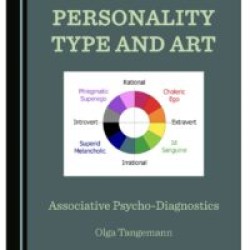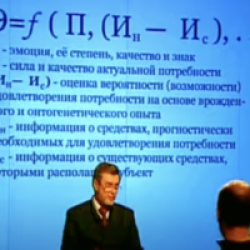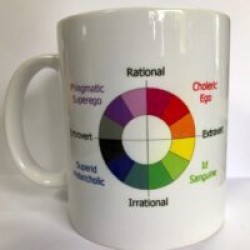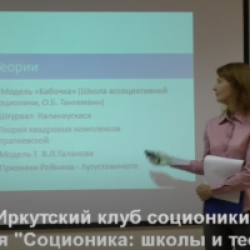Calculator calculates your most likely type and subtype according to your functional arrangment. Functional arrangement – that’s how you evaluate your psychological functions, how you score and prioritise them.
The School of associative socionics use client-centered method of diagnostics. This means that your opinion about your possible psychological type is taken into account and analysed in context of all available information.
The calculator is used together with questionnaire developed by O. Tangemann. The questionnaire is recommended for the video-recording. However, the calculator can be used without a questionnaire if you do not plan to be diagnosed by a consultant.
How to fill in the data for the calculations?
1. First, determine which of the four Jungian functions (thinking, sensory, feeling, intuition) you is the strongest and which is the weakest. Arrange the order of the functions from the strongest to the weakest.
2. Rate each of the eight functions on points:
1 – weak (not mine) function.
2 – neutral or function in doubt.
3 – strong (my) function.
Attention, functions are evaluated by you, based on your actual, rather than the desired capacity. Please, do not take into account “quadra values”, since quadras estimate desired abilities, rather than real.
How to distinguish the real from the desired capacity?
If you easily evaluate information and act on it without resorting to the help of others, this function reflects your real ability. If you have difficulty with the assessment of information and need support from the outside, it is most likely your desired ability. If you are not sure of your competence, select the category of doubt and ascribe this function 2 points.
If you are unfamiliar with socionics and do not know the meaning of terms, please refer to the article about the information aspects, which details the semantic content of every function.
What to look for when evaluating the results?
Calculator – a tool of a consultant for associative socionics, which evaluates information on the presence of coherence between individual readings or, on the contrary, the lack of consistency in the person’s indications. Assessment (scale) of lies generally is used for this purpose in the tests. The more harmonized and coherent information currently provided by the client, the more we can trust the result. If the readings differ, it is a reason to have a discussion with the client about clarify the strengths and weaknesses of the function.
What does the result show?
1. The most likely type and subtype.
If you have received the version of type which you did not expect means that your data was not sufficiently consistent and coherent. Note the presence of inconsistencies in the testimony. If the calculator is unable to determine your type at all means that your testimony has a great degree of inconsistencies that you need to clarify for yourself.
2. Psycho-dynamic profile evaluates strength and weaknesses from the point of basic dichotomies: rationality (J) – irrationality (P), extraversion – introversion and statics – dynamics.
3. Functional profile determines your functional preferences.
4. TPE – profile evaluates the distribution of psychic energy in your psyche which is directly related to your type and subtype.
Note, there should be consistency in the results between Psycho-dynamic profile and TPE profile.
Additional explanation about the subtype system for those who have further questions:
Subtype reflects resemblance of the dominant type to another type based on shared basic dichotomy. For all who has got no idea about my subtype system I will say following.
Some tests show many other types as a other possible types which one way or the other similar to your actual type.
I use the similar principle. For example, if your type is IEI some tests may show you a choice of other types to consider as well like ILI, SEI, EIE and etc. These similar types are subtypes – the types you are similar with to a greater degree.
In my subtype system I consider two ways of identifying subtype:
1) Within your small group there will be two most similar types – ILI and SEI. If ethics is slightly stronger then SEI, if intuition – ILI.
At the moment the calculator does not show these subtypes. And I am not sure if this is necessary. To be logically correct your “relative” type – type with the same programme function – should be always considered as your subtype. Just because of higher resemblance. Therefore for the type IEI we can suggest the profile of 3 available subtype (from strongest to the weakest) within the same small group of types (Superid-types):
ILI – SEI – SLI
But the whole idea of using subtype system is to differentiate among people of the same type. Long tradition in socionics was to differentiate the type by the programme and creative functions. When compare two IEIs we can say – this one is more ethical and this one is more intuitive. It will depend on how you see those functions in yourself. Some IEIs see ethics as strong and do not see their own programme function.
2) I believe that the most reasonable way to identify subtype would be based on 3 major dichotomies (differences among the small groups of types, more general level). Each type shares 3 dichotomies with other small groups of types.
So, if you chose NF and your type is IEI you will get one of the 3 possible subtypes:
Introverted subtype – IEI
Irrational subtype – IEE
Dynamic subtype -EIE
So, you will be considered as either introverted IEI, or irrational IEI or dynamic IEI. These subtypes are also called TPE subtypes or psychodynamic subtypes. Each small group of types is associated with the type of psychic energy – here we go. This is the concept – you can buy it or not buy it – it does not change the underlying logics and structure of the subtype system.
Only in one case you can be considered intuitive IEI if your subtype is IEE. Stronger intuition. In other two cases you will be ethical IEI with the subtype of EII or EIE. This does not mean that ethics stronger than intuition. It means that intuition is well balanced with ethics.










Recent comments